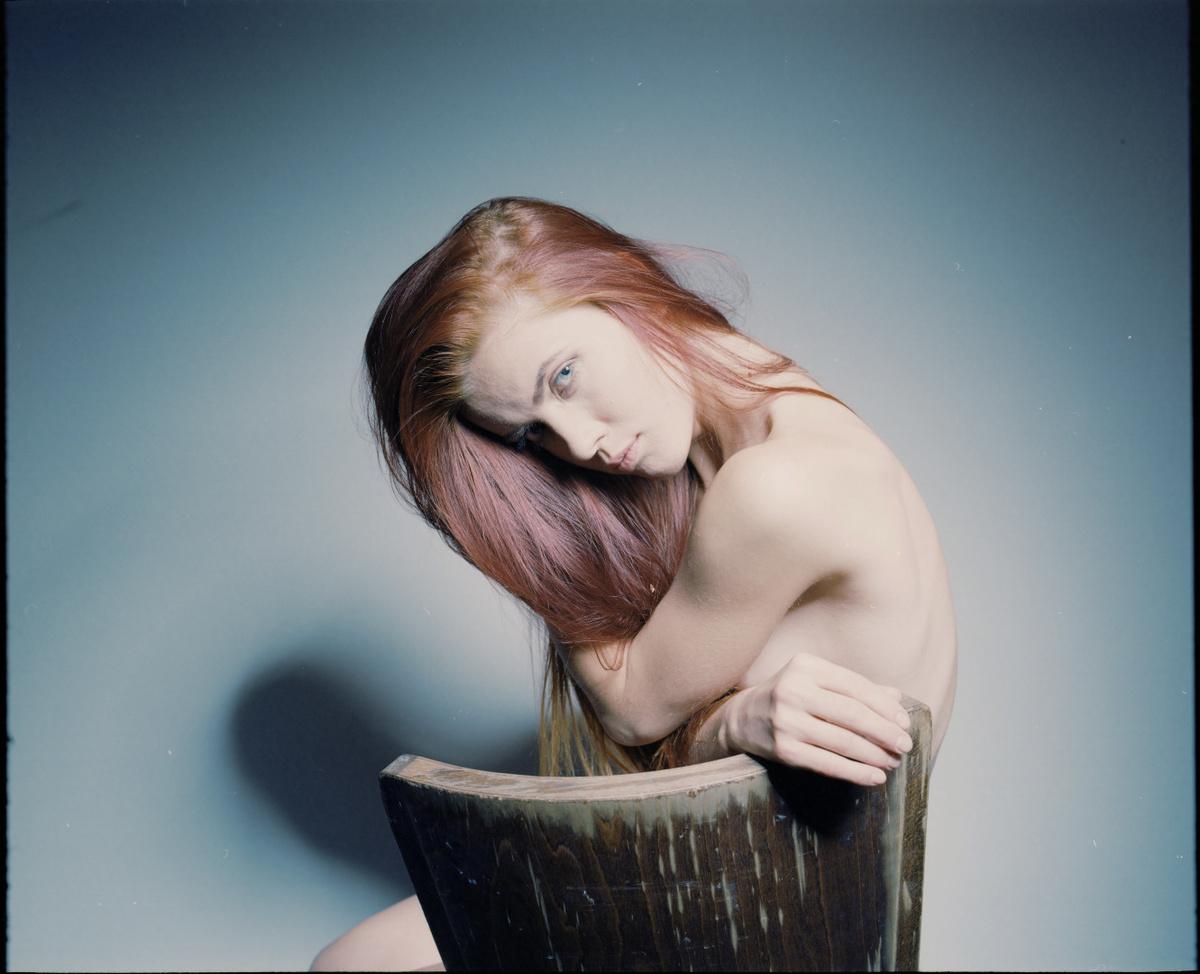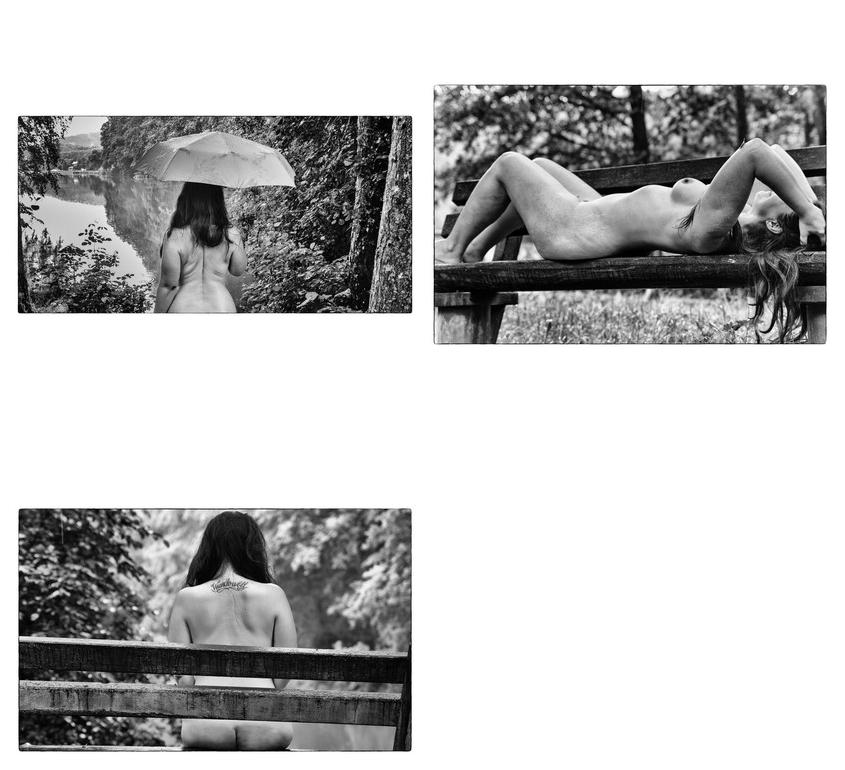Katrina, in my Studio. Shot on Kodak Ektar 100 with a MamiyaRB67. Messed up the Home-Development with C-41 but I am more than happy about the results
About my Gonzography and some shots made in Ostia, Rome
Many people feel comfortable with the order and the beauty.
This influences their vision and prefers it when they observe. I can feel this sense of order in open contrast with the unpredictability, tension and chaos in the world. My work is an examination of the different forms of how the human animal adapts and shows its different faces in the world.
Without filters. Raw. Straight.
I enjoy to photograph moments where you can feel there is a particular kind of tension. It doesn’t really matter if I am on a street or in a little room. I am influenced both the relative quiet that the mathematics of chaos.
Essentially, I want to celebrate the human. I want to show the deep and indissoluble dichotomy between the eccentric and the ordinary. Photography and writing are always an interpretation of reality. In my photography there is a lot of emphasis on interpretation, because I always believed in this continuous relationship between the external reality and what is my feeling when I work both as a photographer and as a writer.
The space for interpretation is always present when I make a photograph. For this reason I think any photograph is a document of what happened in front of my eyes but also a witness of what it was my mindset at the moment to press the shutter button. A photograph is a revealing action, of the situation represented and also portrait of myself.
I borrowed the Hunter S. Thompson concept of Gonzo Journalism, and I speak of Gonzo Photography. I immerse myself in the situation, I enter it really, I put myself at stake, I take my own risks.
The photos you can see here are a reflection of my approach. I realized these photos in Ostia, I would say a barrio in Ostia, that is not completely safe to photograph there but I did it. Because I am a photographer working in Mexico in popular neighborhoods everyday.
I can remember how someone said me that I could’t reply the same approach in Italy…as if photographing in Mexico was easier …
In these images there is interaction and there is not. I don’t use just an approach and anything depends by the situation. To the end of the game to me is just about photographing life. Just like it is.
I hope you enjoy.
Bilder aus meiner Heimatstadt Duisburg
Regenshooting mit Celeste
feels good to be free
Back then, when nudity was still considered normal and not yet demonized by Facebook and Co., models often had an even more relaxed relationship to their own nudity.
I had a wonderful day of shooting with the beautiful Ina. We always had small breaks between the individual sets. But anyone who knows me knows that I can’t put the camera aside during the breaks. Especially in the moments of relaxation, pictures are often created with a lot of emotional proximity to the model.
The images are unprocessed, except for converting them to black and white, reducing them and then sharpening them.
The picture are unedited, except converting to black and white, resizing an sharping
In the future I will try to select the pictures in my blog a little more and to reduce the number of pictures.So now this is my first try with only three pictures.
Spiegel+Wasser
STRKNG – Editors’ Selection – #53
100 striking images · 2020-06-22 – 2020-07-28
Cover: © Thomas Bichler
Many Thanks to the contributors:
albert finch· alberto monteraz· alfonso de castro· ana lora· andreas jöhren· andreas puhl· andrew w pilling· angelique.boissiere· anna försterling· artisanal.pictures· artur frost· axakadam· axel schneegass· aylen hervaz· bcb karim· brigitte wildling· carla m· chaotic lullaby· deborah sarah drexler· dietmar walther· disillusion· dq· edition· elena kiselyova· emmanuelle yaneva· erik witsoe· eugene reno· fa· fabrizio massetti· filthy wizard· francesco sambati· grégoire a. meyer· grethemabon· hans severin· hetocy· holger nitschke· imar· ioannis (yiannis) samaras· jérôme scullino· joachim alt· julia beyer· juliet· jürgen bode· kamera_maedchen· kantorka· katja heinemann· ken gehring· kiitos_c· kostiantyn baran· laurent askienazy· lee acaster· lili cranberrie· lima lew· linda lena blanka· lukas wawrzinek· lysann· l‘ocean gris· marc von martial· marian hummel· maxime broy· melloncollie· mg-lichtmaler· michael wittig· michael wölfel· michał magdziak· narkildo· nasos karabelas· natasha buzina· nishe· olaf korbanek· olga· oliver staack· p.feldhusen.fotografie· peyman naderi· philomena famulok· photographer tetsuro higashi· piet.sommer· praise of light· rdpx· reahnima· renate wasinger· rolf florschuetz· sermon fortapelsson· sirena wren· somallie· sprache der seele· thomas berlin· thomas bichler· thomas popien fotografie· unknown· uwe leininger· willi schwanke· zwischensequenz
Teilnehmer: Fotograf Thomas Bichler
vom Val Bedretto ins Val Formazzo
Reality Remade (2011)
I realized this project in 2011, through a reflection about my mindset of a new arrived in Mexico City. I should create ghosts so I used a flash unit to achieve it. After the publication of that mini project I started to ser a lot of street photographers replying my technique.
Reality Remade is a reaction of my condition in that moment. I was arrived in Mexico City a year before and after that I still felt myself as a total stranger in town. In October 2011 I worked 3 weeks in Los Angeles where I met a lot of talented photographers and that experience was fundamental to me.
I returned from the United States with a lot of energy and a new spirit, above all full of ideas that I wanted to implement. I bought a Yongnuo 560 flash and despite I loved the use of flash on the street watched in the work of Bruce Golden my intention was just to have an experience with the flash for my street shots. I absolutely had to avoid imitating him. 1/30, 1/60, sometimes even 1/15 and the use of flash. It is a technique that has something random on the results and I was just experimenting while I was working. Experimenting just like still happens to me because I never want to stay in my comfort zone. This is how I learned a lot with photography.
Madero Avenue is a street very busy, which leads you to the Zocalo, the most important square in the center of Mexico City. I watched all these people pass in front of me and then disappear. People I didn’t know and who I probably wouldn’t see again in my life. It was like the life and death. You appear at a certain point and then disappear, just like everyone of us. I understood how that idea could be a theme of a project and the flash unit could be a fantastic tool to realize it: by creating ghosts on the street I could give to the viewer the sensation of ghosts, as existences of the past that appeared, spirits who still inhabited the city, continuing to animate it in their wanderings.
It was a project different from what you expect when it comes to Street Photography. It was my project. I was photographing the reality but playing with it, in order to propose a reflection that was completely personal, born from an inner feeling. It also does not happen or at least I had never seen it applied to street photography to tell about a theme that does not speak only of life but also of death.
You can read also some backstage considerations about the project on my blog:
https://alexcoghe.com/journal/reality-remade-story-of-a-street-photography-project









